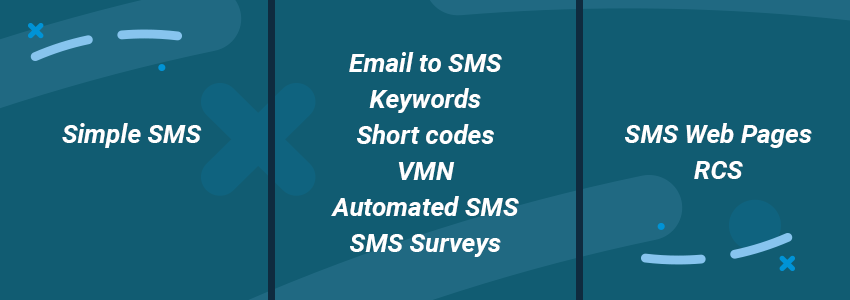Since the first text message was sent out in 1992 that said, “Merry Christmas”, text messaging and mobile marketing has continually grown to become an ever-integral part of business sales and marketing plans.
The two main reasons behind the sustained growth of SMS, and why 97% of businesses said it works in 2019, are;
1. Simplicity – There isn’t anything easier to do than sending your customers a text message.
2. Evolution – It has evolved and adapted to fit consumer needs throughout the years.
Sending a bulk text message to thousands of customers at once takes a matter of minutes, you are able to track the ROI of an SMS campaign, who and how many people clicked the URL link, and a whole host of other functions – it is just so easy. It is still just as easy to use as some 20 years ago but now gives the end user a better mobile experience.
Take a car for example, the first car had wheels and an engine to power it. Cars today still need those basics features but have been developed to enhance the drivers’ experience with air con and heated seats.
Mobile marketing is very similar, when it first began businesses could send a text message, which they can still do today, but mobile marketing has also evolved to include extra features that enhance the users’ experience.
Early mobile marketing years
In its early days, mobile marketing was very basic, it allowed businesses to send a simple 160-character text message to their customers. But soon 160 characters was not enough, with businesses wanting to send longer messages, which is exactly what happened. SMS quickly moved forward and allowed the sending of multiple part messages.
Mid-00s technology boom
Technology boomed at the beginning of the millennium with thousands of new ideas and inventions, some good, some not so good. On the good side were the advances in mobile marketing which over the past 15 years has seen a huge jump from simple SMS to what it can offer businesses today.
Email to SMS – Businesses were jumping on the idea of sending their customer text messages, but some weren’t so keen on logging into another platform to do so. This is where Email to SMS came in, allowing employees to message customers from their email accounts.
Keywords & Short Codes – Mobile marketing was no longer a one-way communication channel, with keywords and short codes allowing businesses to offer an easy solution for consumers to get in contact with them, capture more numbers, or run a text to win competition.
Virtual Mobile Number – On the back of keywords and short codes came virtual mobile numbers. Businesses could now have a two-way conversation with their customers, meaning a better way to communicate as mobile phones became more entangled with our lives.
Automated SMS – Businesses no longer wanted to manually send their customers a text message, they wanted everything to be automated and by using an SMS API, businesses could. Text messages could now be automated allowing businesses to send automated appointment reminders, purchase and delivery notifications, alerts, and much more.
SMS Surveys – For any business to grow they must constantly deliver great customer service and keep customers happy. They only way to know if customers are happy is by asking them. By this time mobile phones were an integral part of consumers day to day lives, never leaving our side, meaning using SMS to survey customers was the most efficient and effective way of collecting customer feedback.
SMS today and in the future
Technology continues to grow, meaning for mobile marketing to keep up and deliver great user experience, new features must be developed. This is where rich messages comes in, allowing a simple SMS to be turned into something that gives the end user a better experience.
SMS Web Pages – The first step to rich messaging was to give the user a better experience than a simple text message. SMS Web Pages gave this to businesses as they could now send a dedicated mobile landing page that included images, extra text, and a call to action button. This would then display a preview image of the page within the body of the text message, increasing engagement and clicks.
RCS – A step further in richer communication is RCS (Rich Communication Service). Instead of the user clicking a link to view the landing page, RCS delivers the content straight to the users’ handset allowing them to interact with the text message. RCS is currently being rolled out with a view in the next few years for it to be on all mobile phones. If you want to learn more about RCS have a look at how Esendex are leading the way in rich communication here.
Mobile marketing has truly grown from a simple 160-character text message to a richer communication channel. Over the next 20 years, SMS will continue to grow and adapt to provide better communication for both businesses and consumers.

